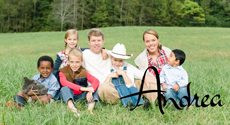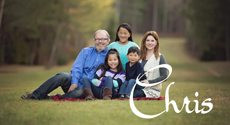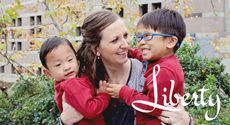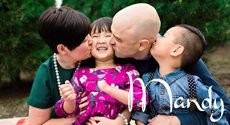Our daughter was nineteen months and four days old when she was handed to us in an alley outside the Civil Affairs office in north west China. We read and prepared as much as we could to attach to each other in a healthy way. We followed all of the rules as best we could. For months, Mama and Daddy were the only ones to meet the needs of comfort and food and drink. We co-slept and/or had her within arms reach while she slept for almost the first full year home. We cocooned as much as we could considering she needed open heart surgery within her first few weeks home. We wore her tiny 16lb self in a baby carrier as much as she wanted or would tolerate. Upon waking from any sort of sleep, bedtime or nap-time – if she was in a room alone, panic ensued and we ran instantly to show her someone would always come for her. We stayed close to her and rocked her and hand fed her and did all of the things the experts tell you to do. And it worked! She quickly knew who her people were. She gave the cues that Mama and Daddy meant home, and began to look to us as her providers for food and comfort and safety.
When we first arrived home we could not be more than an arms length away from her. Slowly it grew to a few feet, and then a few more. Trips to the bathroom were no longer a one person experience, wherever we went she came too. Over months it improved and we were able to go into other rooms where she could still see us, while she remained in a different room playing. Sooner or later she would always come to where we were or ask us to come play. Almost two years later, independent play is still rare but it does happen. Today, being alone in any room is uncomfortable for her most days. Some days she doesn’t mind at all and then the next day it sends her to panic.
Our second year home began with transitioning her into her own room and crib. It happened seamlessly after returning from a family vacation. Something was magical about that interruption of normal life and on that first night back home she slept through the night, in her own room, all by herself and continued successfully for months. There’s a special kind of thankful that comes when you no longer have to navigate your night time routine with a flashlight or in silence while a sleeping toddler snoozes away beside your bed.
What still hasn’t changed from our first days and weeks home is the behavior upon waking. Still, whether waking from a nap, or waking after a long night of sleep – panic is, to this day, the knee jerk reaction. “You are safe in our house. Mama will never leave you home alone. Someone who loves you is always here with you. You are safe,” is the mantra. It has always been the mantra. Yet, that reaction to panic is dominant. It is her default. It is as normal a reaction for her to panic upon waking, as it is to giggle when being tickled.
We delayed potty training because of lack of interest on her part and mine honestly. This tiny dynamo is small but fierce and unless it’s her idea to stop using diapers – it’s simply not going to happen. Underpants were not worth a battle. There are many things in parenting that are worth a battle, but in this season of life and with this child – underpants were not among them. Finally, at almost three years and three months, just a few months ago, we were talking about school and how she cannot go to school like her older siblings do until she is only wearing underpants and no more diapers. Somewhere in that conversation she decided school was worth it, and that was that. About 5 days later she was accident-free both day and night – in fact she never had an accident at night. We were a diaper free household! However, we traded underpants for sleep; because over that 5 day period and for several weeks following – she no longer slept well in her room alone. At all.
Several times a night she would wake up panicked, soaked with sweat and tears. We assumed she woke to go potty and maybe for some reason she couldn’t hold it as long as a three year old should be able to. Perhaps, now that her subconscious was aware that she didn’t wear a diaper any more, she wasn’t allowing herself to sleep soundly incase she had to use the bathroom. After a couple of weeks of sleeping on her floor, sleeping sitting up next to her bed, waking up seven or eight times a night to go and comfort her we became more desperate for sleep then when we had a new born. We tried night lights, music, essential oils, a fan, white noise. Everything. Only one thing worked.
Closeness.
Today, almost two years since “Gotcha Day”, there is a small, $25, child sized cot next to our bed where she has slept peacefully and soundly, and bless it all – through the night for two months. We are back to navigating our bedtime routine in silence with a sleeping toddler in our room and the assistance of our iphone flashlight; but we are all sleeping through the night (somebody say Glory!). It turns out she can sleep 12 hours without using the bathroom. All her parts work just fine in that department. However, in her mind there is a persistent battle of fear and anxiety that she will wake up alone. It doesn’t matter that we have always raced in seconds to be there at the very first sound of her waking. It doesn’t matter that we repeat the mantra that she is “Safe in our house. We won’t ever leave you alone in our house. Someone who loves you is always here when you wakes up.” It is her default to panic. Looking to see if she is alone is the very first thing she does upon waking. I have watched this take place. I don’t know why after two years she still is anxious – I could guess a hundred different things, and I probably have. I could read all of the books again on attachment and the connected child and sleep disorders or trauma and the brain – but the bottom line is that in order or her to feel safe sometimes she needs to be close. Closeness is her jam. Even now as I type and Curious George has her full attention she is half on my lap. Closeness = safe. Closeness = contentment. Closeness = peace.
We who adopt must always have “attachment” running in the background of our days. Are we cocooning enough, should we co-sleep or share a room longer? Is our way of disciplining doing more harm than good? What can we do or could we have done differently? How can we raise this child who has endured things they instinctively react – to but their minds have long forgotten, to feel safe – to believe that now they are safe? How do we build security and trust in ways that will last, even though we may never uncover what drives their behavior because they have no memory of their trauma and yet it shapes the way their brain responds to unforeseeable triggers. How in the world, can we who may have little to no experience or degree in child psychology help to fight this invisibly inward, yet out loud battle. I don’t have all those answers because almost two years in, I’m still learning and still adjusting. I’m reaching out to other adoptive Mamas and asking if todays behavior is familiar and asking “what worked best for you?” When they say, “Oh yeah – I get that. My child did that too…” I exhale a little easier and relax in the knowledge that I’m not the only one. She’s not the only one.
Attachment in adoption is a dance. It is learning to move together through these milestones and goals and building a foundation that will support a lifetime of growing and learning and loving. They say “Love is War”, and this is a war with many battles and even in battles where we are victorious there is still hurt and tears even though though there is progress. As we work to build this foundation of attachment, sometimes we lay down five bricks of one day, only to lose four the day after. We make strides and celebrate progress and milestones like sleeping in separate rooms for almost a year – only to be sleeping in the same room again for a while – and it’s ok. Regression is part of attachment. Our children have come from hard places, and have experienced trauma which shapes and drives their behavior. These “setbacks” or “retracing steps toward attachment” are opportunities to reaffirm for our children, sometimes over and over again; that they are safe, they are loved, and we are in this together forever.
Somewhere in the beautiful mess, somewhere in the time-ins and the co-sleeping and the eye-contact, and the no-you-cannot-push-me-away moments we woo our children not just to love us but to know to their bones that we are home for them now and always. We teach them about a love that will not quit on them even when it gets to looking like a war-zone. Sometimes all we can think to do for our kids is to stay close – and maybe closeness is enough. Maybe in closeness is where they are soft enough of spirit to learn what we all must learn: We who have been adopted by God the Father as sons and daughters must find our security and our safe place in Him and that cannot begin until we draw close to who He is. Some of us are in hard places now are because we are Fathers and Mothers of children who come from harder places than we expected or can even stand to think about and our homes are a safe place to battle over the lives, and for the love of these precious ones. As their parents, some days we may not feel secure or safe or rested or equipped and I have been there. I am there with you. That is when we press in closer to the One who will equip us for every battle, every good work, and gives us an unlimited resource from which to draw love.
Draw close. Closeness = safe. Closeness = contentment. Closeness = peace.



























Such a good article to read and process as we are getting ready to go get our daughter in China next month! Thank you for sharing 🙂
sooooo good.
Thank you for this. We are home about a month now and are traveling for a family reunion in a month. I shared this with my immediate family in the hopes of a better understanding of why or how we do things.